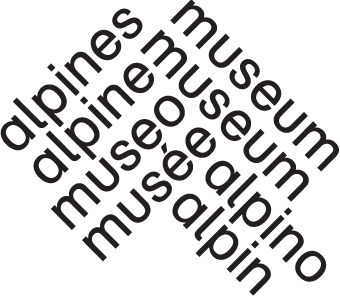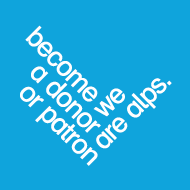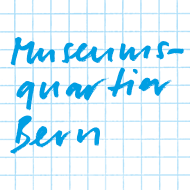Our Water: Six Models for the Future
A Tour of Six Possible “Water Futures”
“Our Water” welcomes visitors with a piece by Ruth Schweikert called “Wasserpartitur”, lasting approximately four minutes. Subsequently, they are invited to explore six walk-through “water futures” spanning two storeys of exhibition space and presenting possible scenarios for our future existence with water. These speculative scenarios, which begin in an urban lowland setting and end in the high mountain regions, focus on individual water consumption, the increasing frequency of extreme weather events, the right of access to water, water conflict, glacial retreat, and winter tourism. Each scenario presents the topic using texts and images documenting examples from the past as well as scientific and everyday evidence of climate change. Video statements from scientists explain the importance of what we do today for how we will live tomorrow. The resulting future scenarios are illustrated by voices from the year 2051, developed by four contemporary authors. The section on “Water Conflict” offers an interactive game in which visitors can take sides in political decision-making processes about water use. At the end of the exhibition, they can write down their own messages, fears, or wishes about water for posterity. These messages are placed in a buoy that will not be opened until the year 2051.
Waiting Room | Sitting on Water
The journey into tomorrow’s world of water begins every six minutes (see introduction). While they wait, visitors can “sit on the water”, so to speak, on wooden 13 stools whose surfaces depict all the rivers and lakes of Switzerland — an image of abundance which most of the exhibition’s visitors will presumably take for granted as they begin their tour.

Intro | “Wasserpartitur” and a Journey to the Future
The entrance area features a five-voice “score” consisting of countless idiomatic phrases to illustrate the importance of water as a sustainer of life and a cultural good. Projections of “facts” about life in Switzerland in 2051 then guide visitors to the future.
Literary Audio-Text (excerpt) Wasserpartitur:

1 | A Precious Resource
Visitors enter a swimming pool in which water is abstractly represented by colour, so that it is simultaneously full and empty – a metaphor for the fragile sustainability of “our water”.
Future Model
Water is precious. Even we Swiss have to suffer the consequences if water becomes scarce, so society has a great responsibility to manage this valuable resource. As a result, people are very aware of their water consumption. A personal water chip measures how much each person uses and calculates when we require water and how much we need to use. It records our consumption and influences the decisions we make in our everyday lives. We even consult our chip while we’re standing in front of the supermarket shelves trying to decide what to buy.

Literary audio-text (excerpt)
Exemplary Water Consumer:


2 | Extreme Events
In the reservoir, where extreme events like floods and drought are directly visible.
Future Model
Dry spells and flooding have become more frequent and more extreme as a consequence of the rise in air temperatures. Having too much or too little water has become a fact of life. But that doesn’t mean we’ve got used to it – extreme events continue to threaten human existence. Major protective measures have been taken to contain the damage wreaked upon human populations by drought and floods.
Literary audio-text (excerpt)
Illegal Water Collector:

3 | A Right to Water
A catwalk leads to the international section focusing on “A Right to Water”. At its center is the “Portable Water Fountain”, an installation by the artist partnership Lucy + Jorge Orta. Objects such as a life jacket and PET water bottles highlight the urgency of the international discourse about access to water.
Future Model
Water was officially declared a human right in 2010. Now anybody can demand justice at the International Water Court in Geneva and call governments to account. This is where people can voice their right to water. This is where they can rein in international companies when they threaten local populations’ right to water. Step by step, the vision of access to clean water throughout the world is becoming reality.
Literary audio-text (excerpt)
Indic Accusers:

4 | Water Conflict
A five-metre dam wall marks the transition from the lowlands to mountain terrain. By moving through the room, visitors can influence the water level and the movement of the waves against the wall. They can also play an interactive game at one of three iPad stations, intervening in events in the fictional mountain community of Alprima.
Future Model
Everyone needs water. Particularly when resources are scarce it becomes difficult to fulfil people’s very different needs, and this leads to intense debate among the population. Providing clean drinking water is the main priority – but then there are energy producers, farmers, tourism service providers, and ecological activists all vying for Swiss water. Who is allowed to use how much, and when? Feelings are running high about water conflict in society and the political strategies for dealing with it.


5 | Snow Resort
In the Snow Resort, the acoustic installation “Water Sounds” by the Zurich composer and sound artist Kaspar König evokes various corners of an exclusive winter resort in the high mountains. Display cases in the Winter Museum show relicts from the world of the past, including a snow cannon, the grab handle of a button lift, and posters advertising winter tourism in lower-lying regions.
Future Model
There is only one ski resort left in Switzerland: in Snowland, at around 4,000 metres above sea level, natural snow still lies on the ground. At lower altitudes only rain falls in winter, and the snowline is rising. Many of us now no longer know what snow looks like. Efforts to compensate for the lack of snow have been given up, as have the attempts to attract winter tourists. Ski facilities have been closed, snow cannons and snow lances have either been scrapped or are on display in Switzerland’s Winter Museum.

Literary audio-text (excerpt)
Winter Museum:

6 | Ice-Free Mountains
Mountains without ice are transformed into mounds of rubble. The mighty, mysterious glacial landscapes are a thing of the past. Between the cracks and fissures of the scenery, visitors can catch glimpses of bygone days through a “stereo viewer”: photographs of glaciers from the collection of the Alpines Museum and wall tableaux of large-format glacier images by the Lausanne photographer Matthieu Gafsou.
Future Model
The ice has melted. What used to be massive glaciers have now receded to the mountain peaks; all that remains are tiny, dark patches. The smaller glaciers have disappeared altogether. The permafrost which holds the rocks together is slowly melting, leaving the slopes unstable. It has become dangerous to climb mountains. The glaciers have left indentations in the landscape, creating new lakes – which have swiftly been utilized for electricity generation and irrigation. More adventurous types even go swimming in them!

Literary audio-text (excerpt)
External Hiker #13:

Epilogue | Messages for the Future
The last exhibition room provides an opportunity to reflect on the future of water. Six questions invite visitors to share their own experiences, wishes, fears, and hopes with a future generation. These messages are placed in a buoy which the Alpines Museum will launch on Lago della Piazza in the Gotthard region. In 2051, its contents will be handed over to the next generation. In the best case scenario, these voices from the past will provide an impetus for opening – or reopening – much needed discussions.



